How to Play with Bingo Cards in Other Ways
Player = Caller
Usually, it’s the teacher, who calls out the vocabulary. But, especially when you play with larger groups of students, it can be even more fun if you let the students call out the vocabulary themselves. Let each player call only one word at a time. Players who call out do have a slight advantage, but you can compensate this with choosing students with less luck as the next caller. Also, let only those call who are not just one word away from having Bingo. It wouldn’t be fun, if one could call oneself’s bingo, would it?
This way of calling the vocabulary doesn’t only practise the students’ reading and listening skills, but speaking and spelling skills as well.
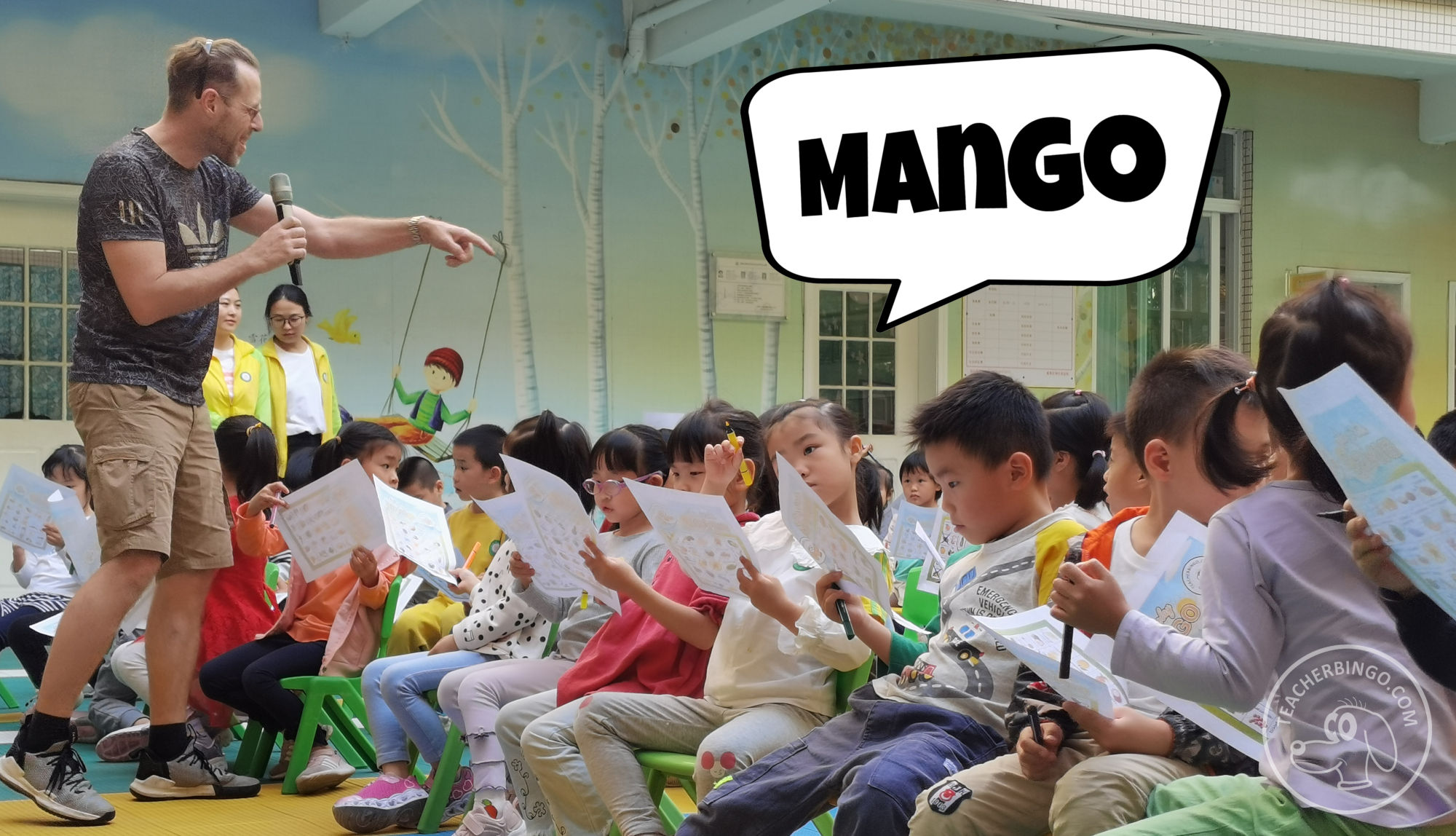
Alternative Winning Patterns
A full row is a “Bingo”. Yes and no. Different patterns are played in various versions of Bingo. You can use different winning patterns to spice up your game or to adjust the playing time of an existing deck of cards. Some of those patterns might be too simple for an advanced game or vice versa. How about combining some of the following or giving the players various options to win the game?
4 corners
suggested for smaller grids or in combination with other winning options
X
use the smaller (5 square) check for bigger grids as well to keep it simple and reduce the total playing time
Blood, Sweat & Tears
a winning combination for a longer game – To win the game, one must cover ANY one row horizontally, vertically AND diagonally, so three rows of three different directions in total.
Letters & Numbers
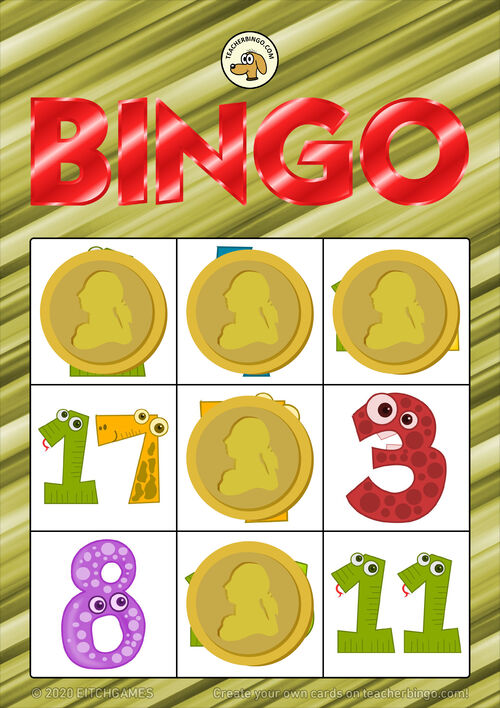 Letter T
Letter T
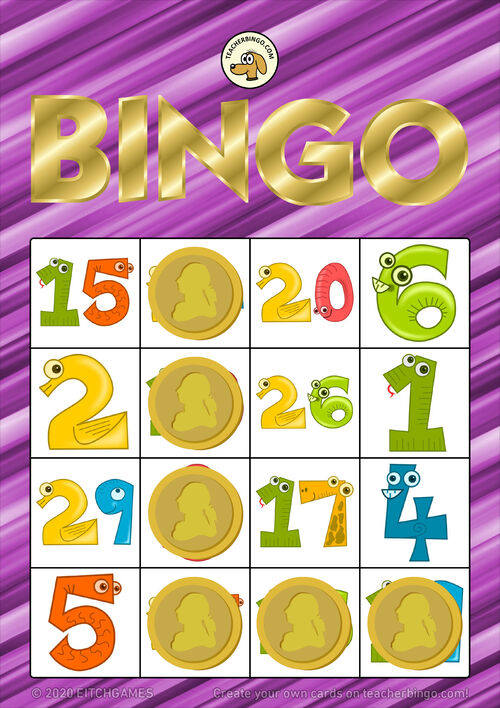 Letter L
Letter L
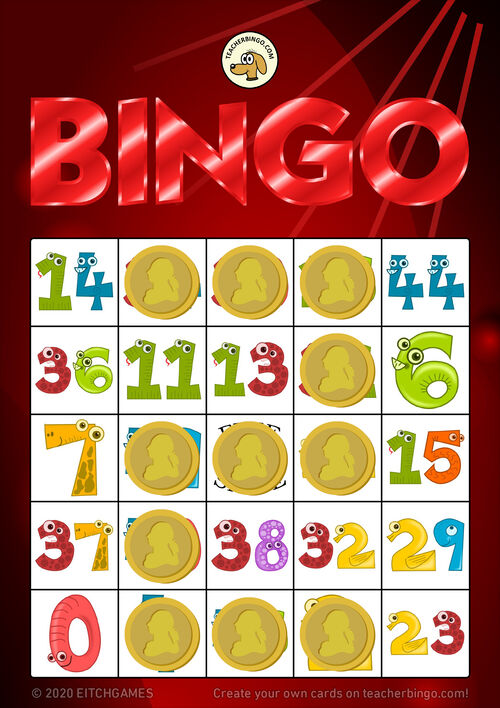 Number 2
Number 2
 Letter U
Letter U
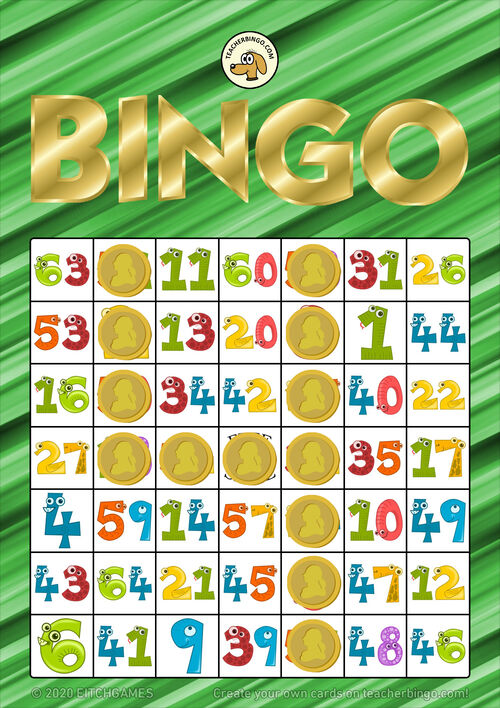 Number 4
Number 4
Cross/Plus
Use the smaller (5 square) cross for bigger grids as well to keep it simple and reduce the total playing time.
Square
The square can be anywhere within the grid. Use a smaller square to simplify the game and shorten the playing time. Use a bigger square to for a more difficult game with longer playing time.
Rectangle
The rectangle can be anywhere within the grid in any orientation. Use a smaller rectangle to simplify the game and shorten the playing time. Use a bigger rectangle for a more difficult game with longer playing time.
Arrow/Kite
The kite can face any of the 4 corners.
Left & Right
Both, the very left and very right vertical row have to be covered.
Top & Bottom
Both, the very top and very bottom horizontal row have to be covered.
Ring/Circle/O
A fun version of this pattern is to only use bingo cards with a free space that isn’t located within the outer frame of the grid. The goal can then be to surround the free space!
Frame
To win the game, one must cover all squares of the outer frame.
More Patterns
Most of these patterns could be used with bigger grids as well! Let your imagination run free and make up your very own patterns for more fun!
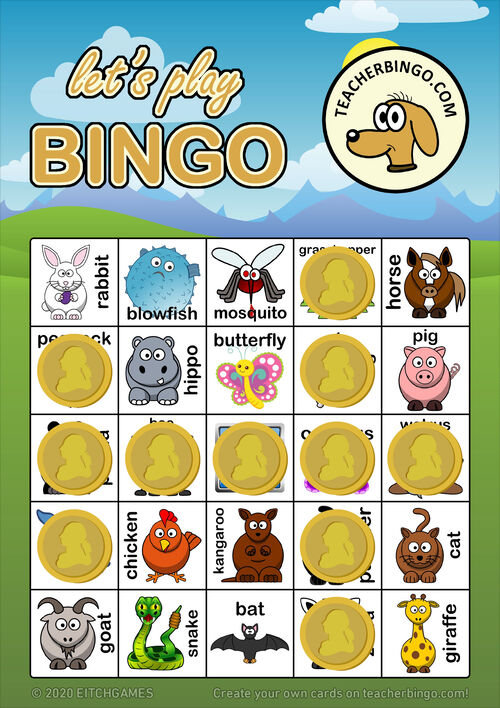 airplane
airplane
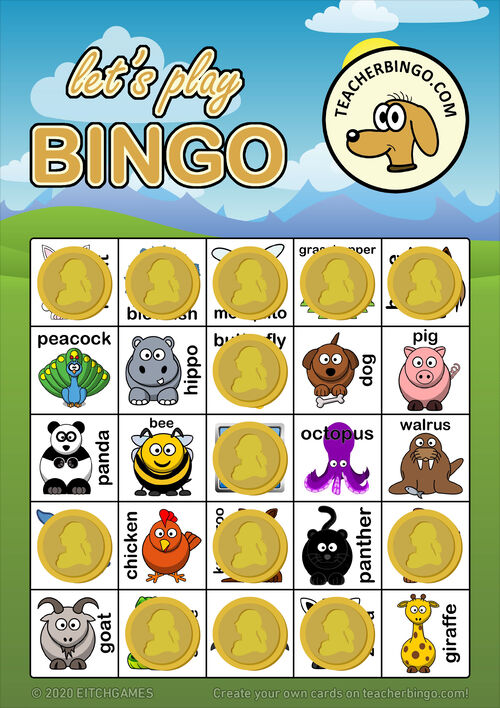 anchor
anchor
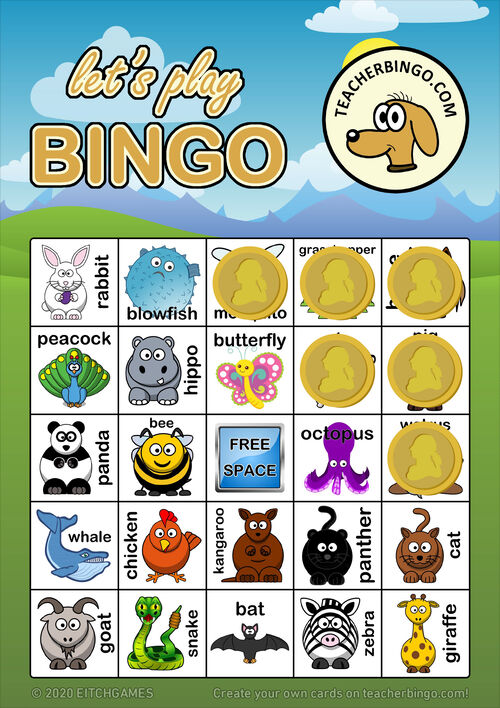 arrow head
arrow head
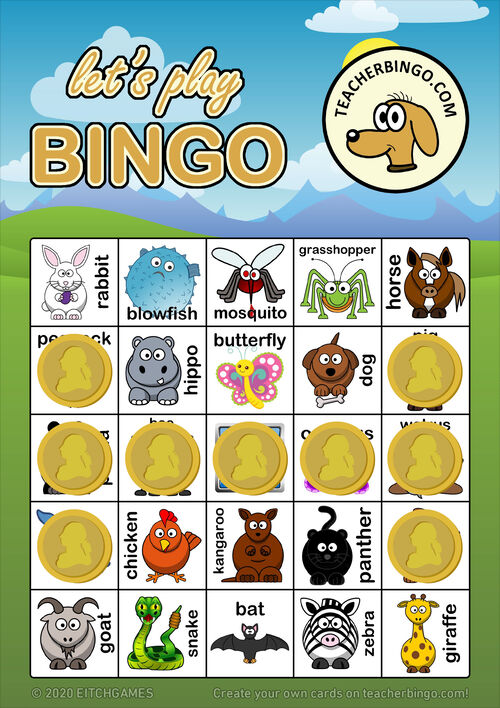 dog bone
dog bone
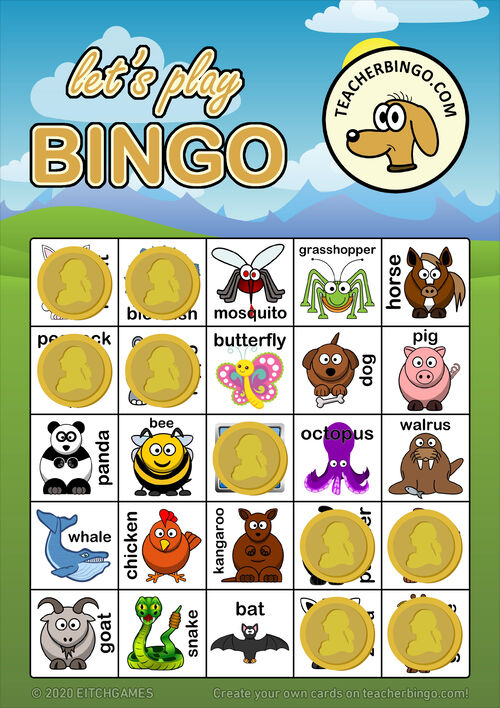 bow tie
bow tie
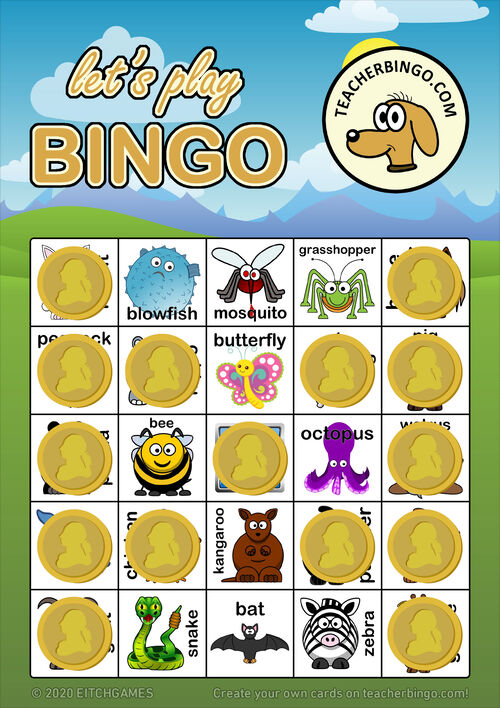 butterfly
butterfly
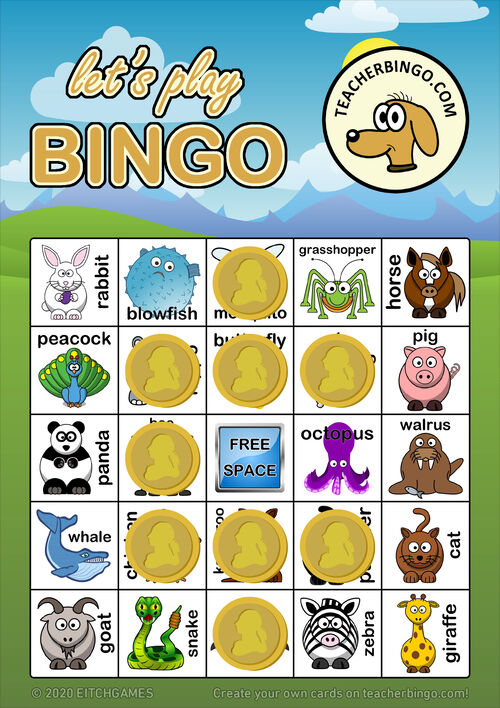 cents
cents
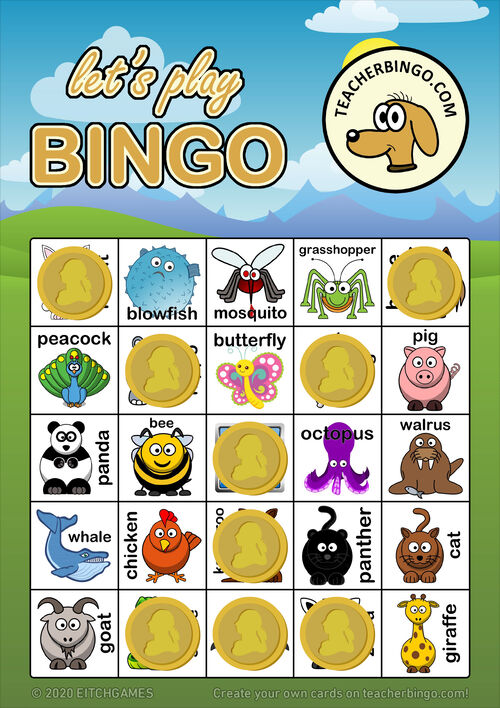 champagne glass (empty)
champagne glass (empty)
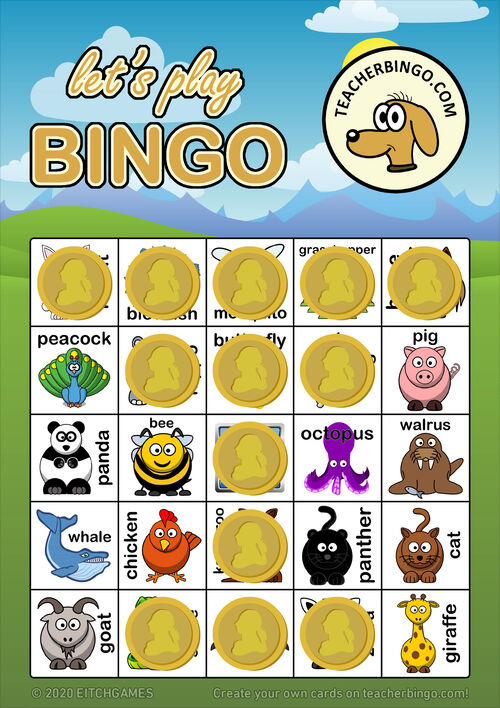 champagne glass (full)
champagne glass (full)
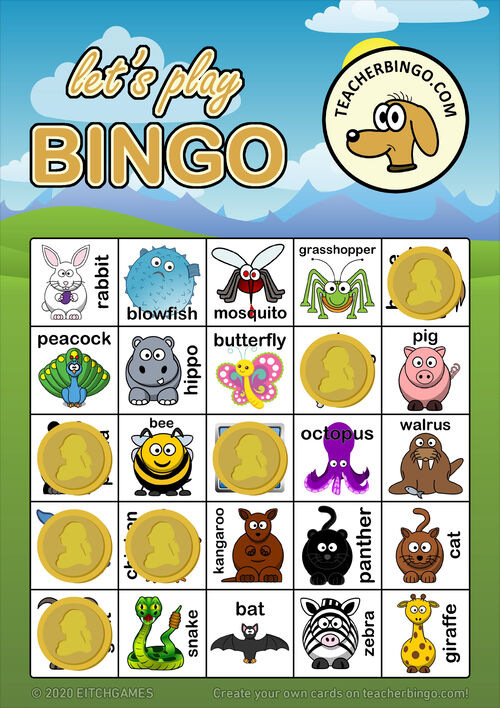 checkmark
checkmark
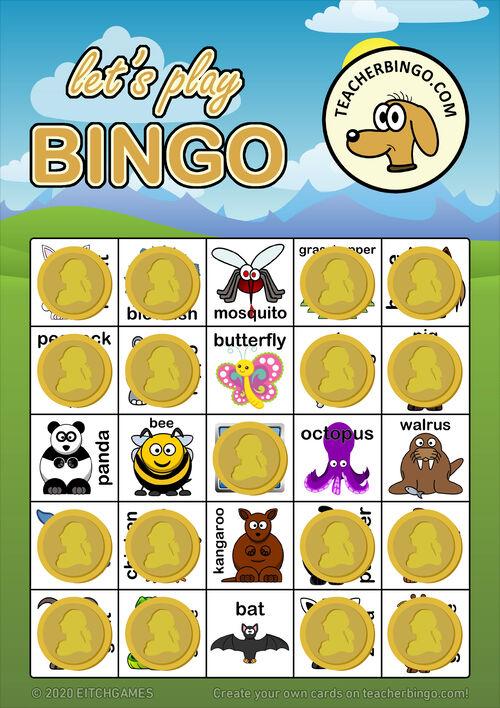 clover leaf
clover leaf
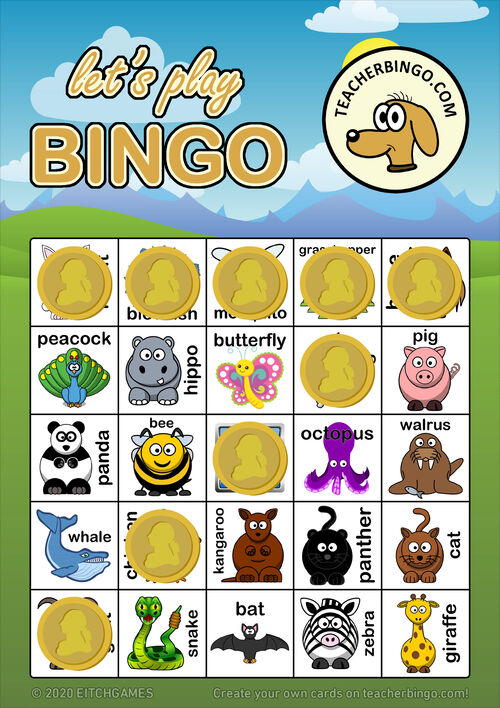 crazy 7
crazy 7
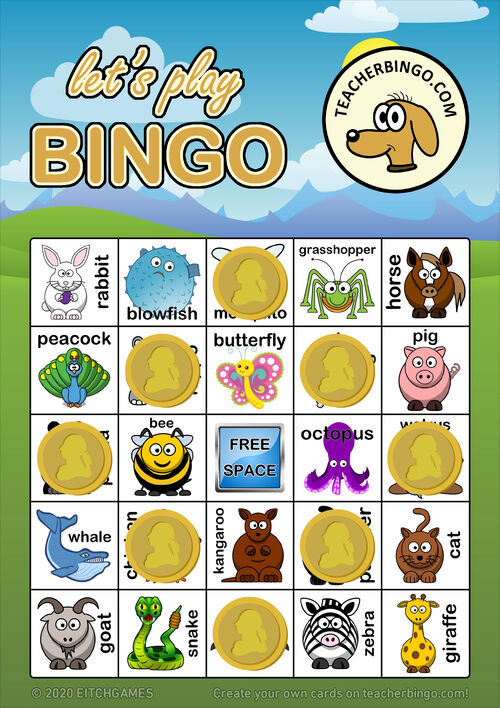 diamond
diamond
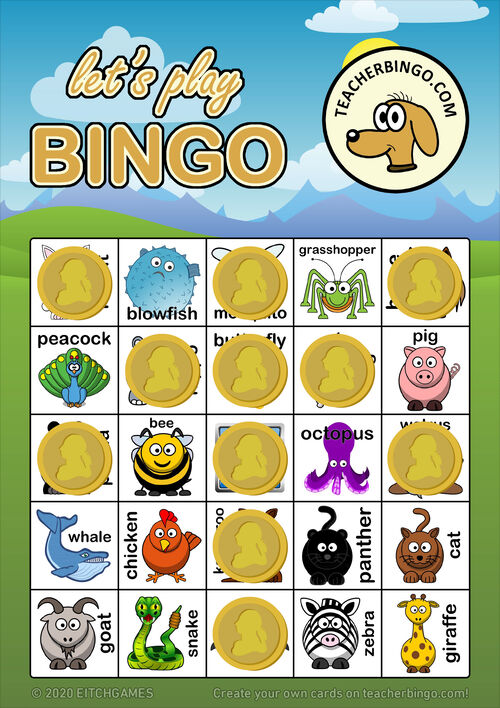 dragonfly
dragonfly
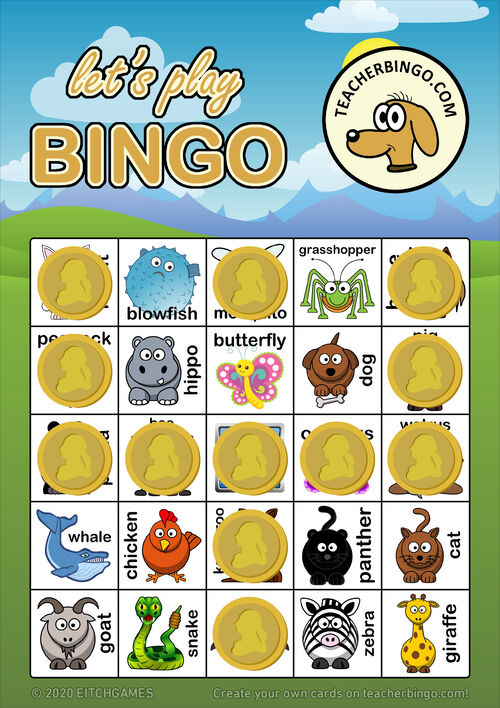 field goal
field goal
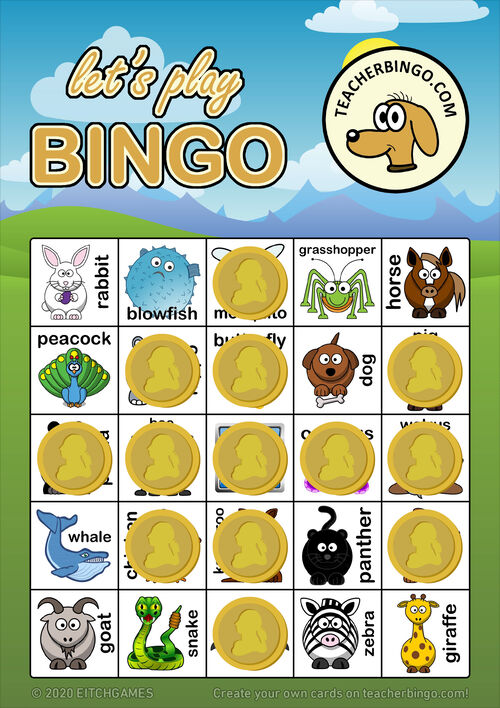 fish
fish
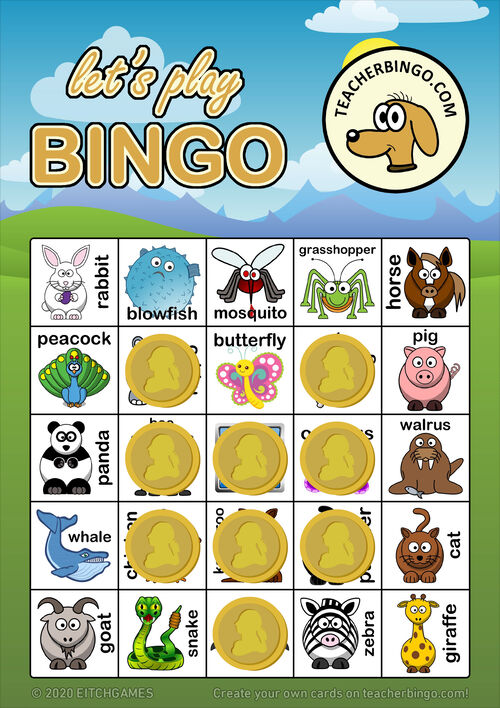 fox
fox
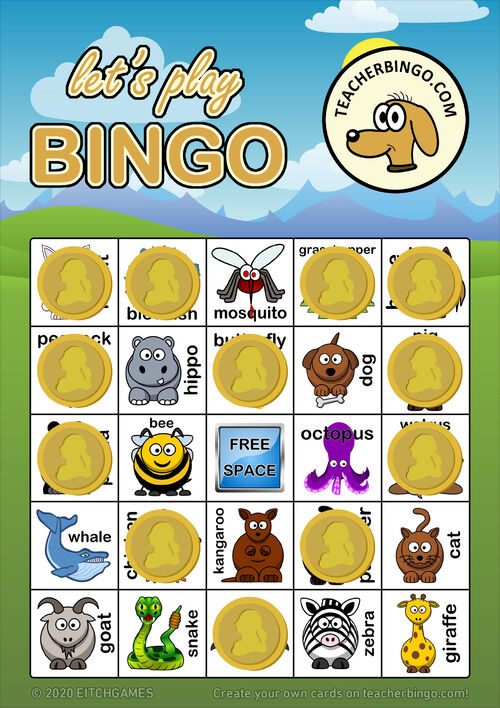 heart
heart
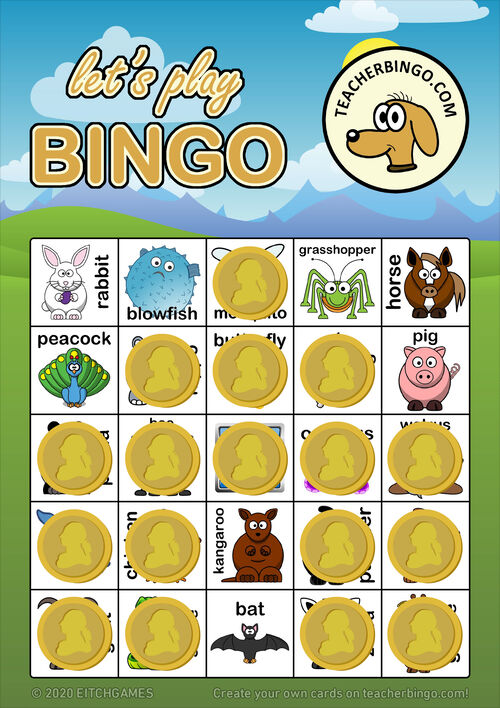 house
house
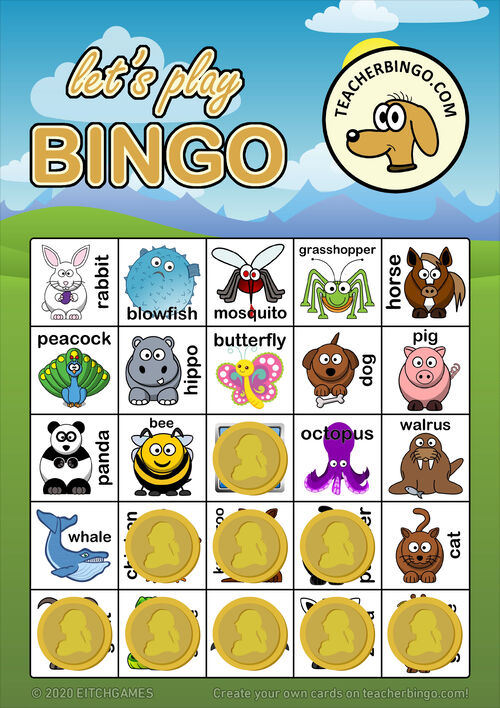 pyramid
pyramid
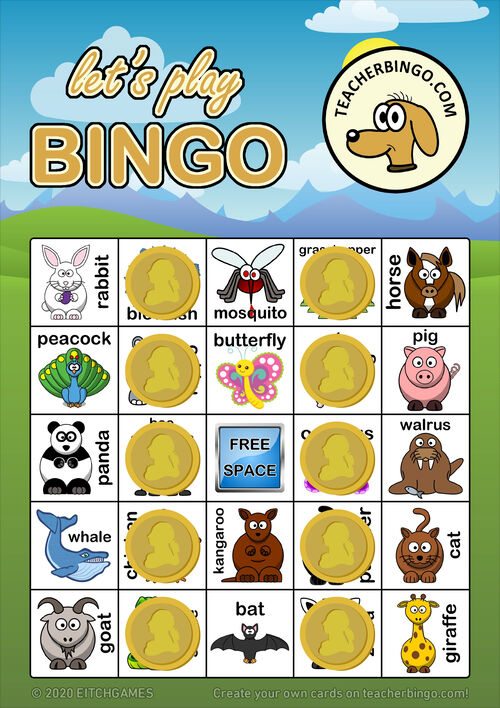 railroad tracks
railroad tracks
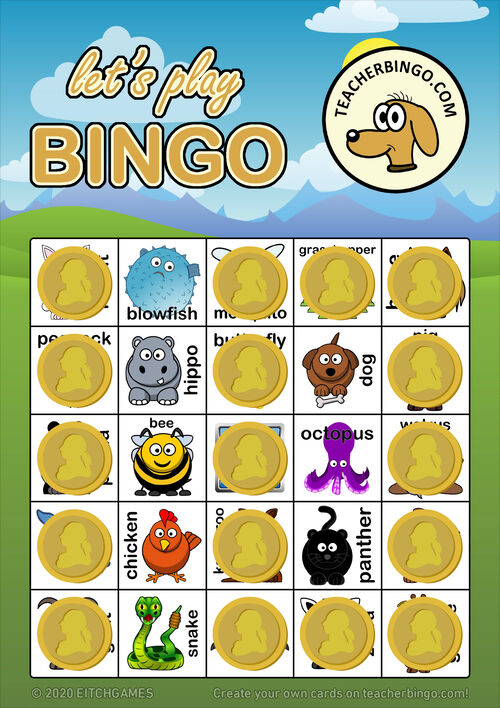 ten
ten
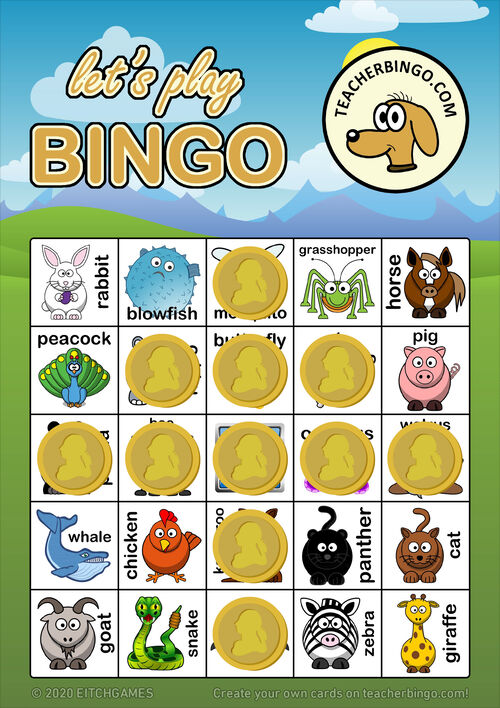 tree
tree
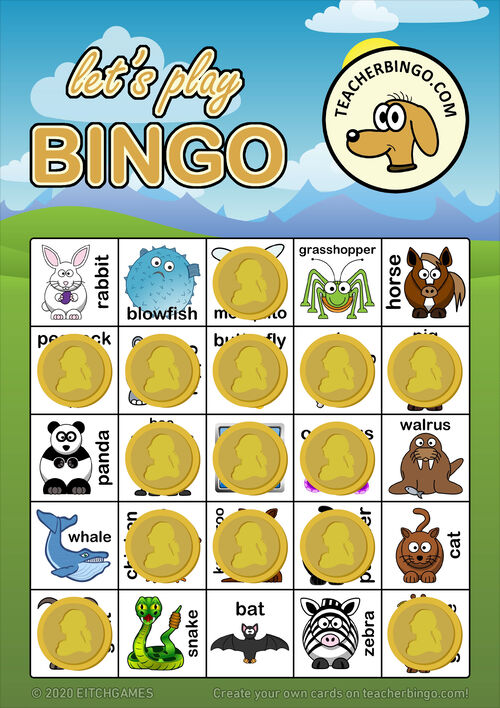 turtle
turtle
Quiz
For younger learners it’s often hard enough to just remember, recognize or spell the word of vocabulary. But your more advanced students will certainly appreciate this, more challenging way of playing. Here are three different ways of transforming your bingo game into a quiz:
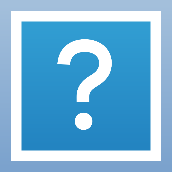
Don’t just call out the word of vocabulary, ask questions instead:
- What color are bananas? (instead of calling “yellow”)
- What’s the largest land animal? (instead of calling “elephant”)
- What’s the product of five times seven? (instead of calling “35”)

Don’t just call out the word of vocabulary, use descriptions instead:
- We’re looking for an animal that likes cheese. (instead of calling “mouse”)
- It’s just like a car, but it’s much longer. (instead of calling “limousine”)
- It looks similar to a mango, but it’s very sour. (instead of calling “lemon”)

Why not use a completely different approach and call the word backwards:
This is a great way of practicing the spelling of words, but be aware! It might just happen that half of your class ends up laying on the floor, laughing until their stomachs ache and their chins hurt, trying to say “NIART THGIERF” (freight train).
One-on-one
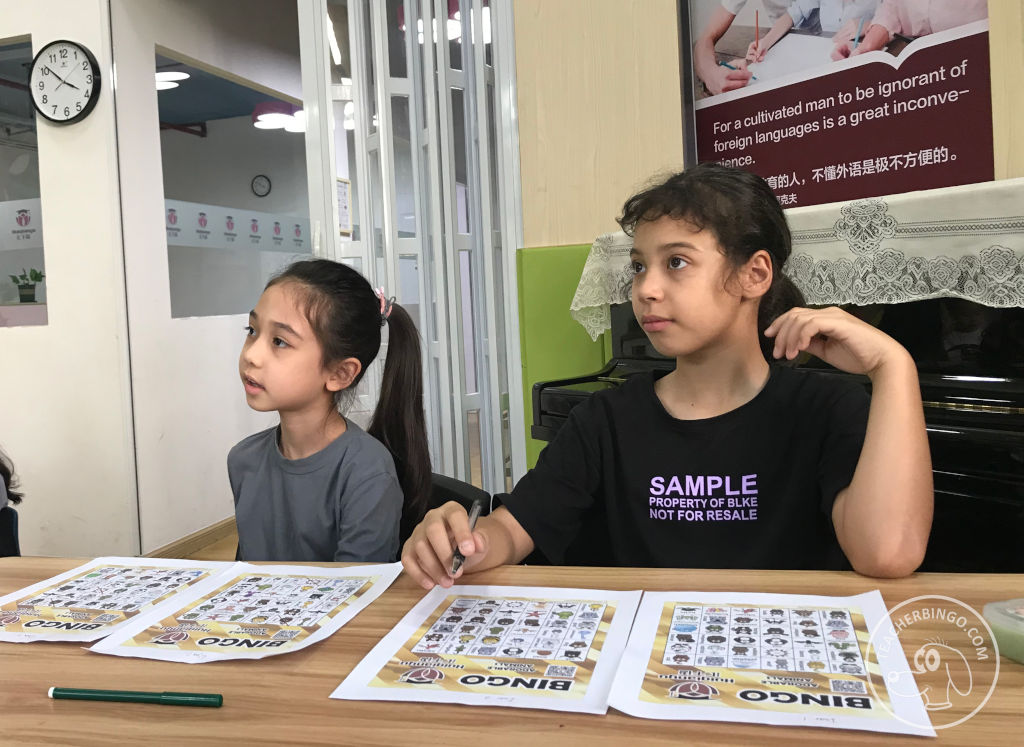
Use four identical Bingo cards (two for each player) just like you play the game of Battleship. Game boxes or folders work well as visual covers, for the players mustn’t see each other’s cards. Each player uses one of their bingo cards to hide the “battleships” (we suggest 1 Triple and 2 Doubles) and the other one to keep record of the words that he or she has already been guessed. Player A might call for “Butterfly” and player B would have to answer truthfully, if his hidden triple or doubles cover the butterfly (“got it”) or not (“missed”). Once all triple or a double have been discovered, the according player must say “discovered”. The player discovering all the other’s hidden groups first wins.
This version of the game can also be played with groups of equal members. In Team-Play-Mode, all members must have discovered all of their opponents hidden “battleships” in order to win the game.
“One-on-one Bingo” is a great way for getting the students to talk, because they have to in order to play the game.
What Is It?
This game can be played in three different ways:
2-Player Mode
Both players get a card with identical vocabulary, the order doesn’t matter. A Bingo game with a 5x5 grid and 25 words of vocabulary will do just fine. Choose one of the words/squares/expressions on the card and mark it with a highlighter, pencil or gaming token. Players now ask each other questions in turns to eliminate all the wrong choices. Let’s take a game of animal bingo for example. Questions would sound like:
- Does it have four legs?
- Is it green?
- Can it fly?
Each player marks out all the squares which can’t be right, eliminates all the “no’s” until only one square is left and the opponent’s choice is discovered.
Team-Play Mode
Make groups of equal members. In Team-Play-Mode, all members must have discovered all of their opponents chosen squares in order to win the game.
Beat-the-Teacher Mode
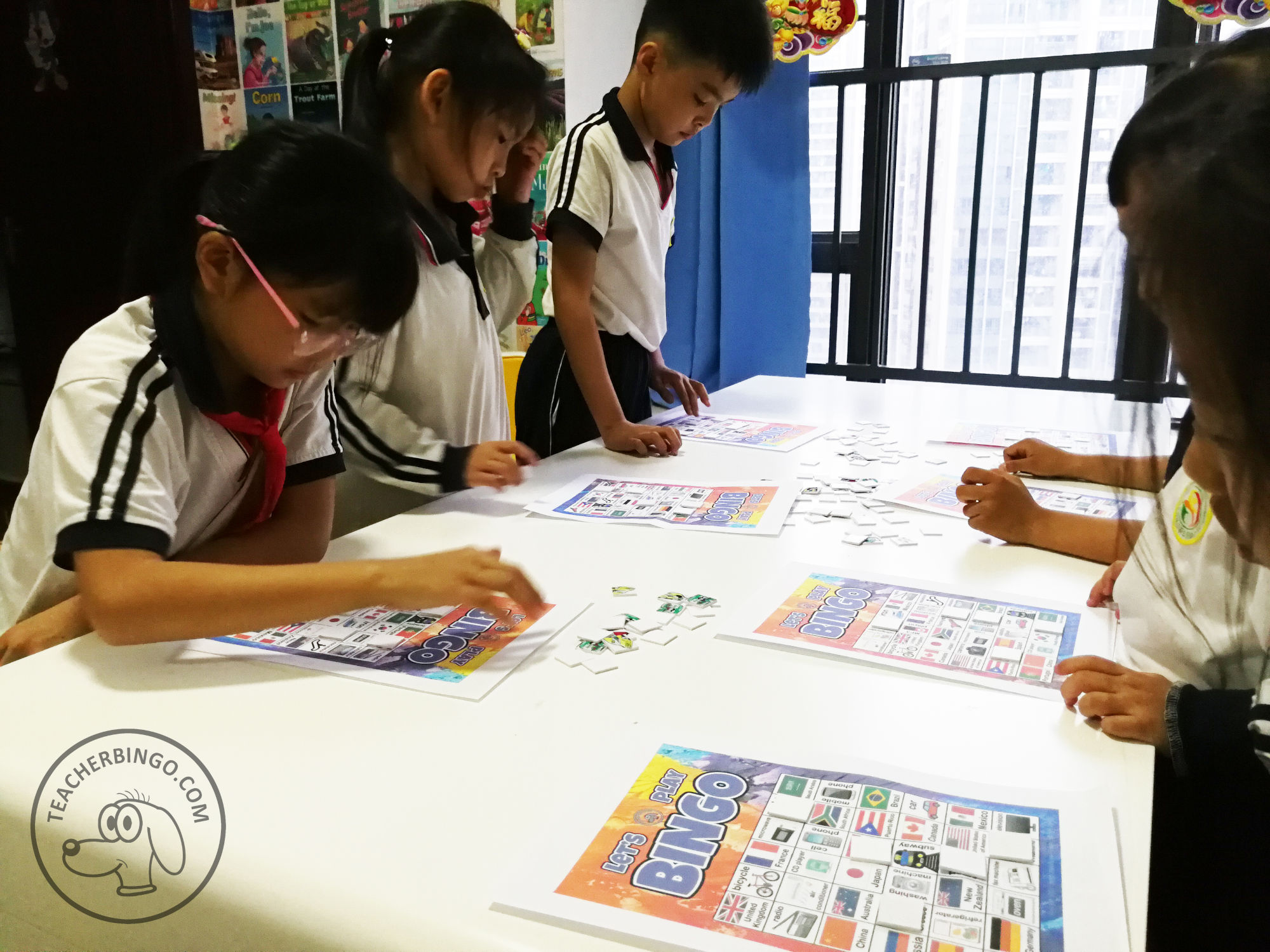
In this version all students compete against each other to be the first to find out, which word/square/expression the teacher has chosen. The teacher calls the students and they take turns in asking him/her questions. In the example to the right, we practiced topic descriptions, so the questioning would sound like:
- Did you choose a country?
- Does the flag have blue in it?
- Is there a triangle on your flag?
“What is it Bingo” is another great way for getting the students to talk, because they have to in order to play the game, just like “One-on-one Bingo”.
What Am I? (Indian Chief or Indian Poker)
Take one of your Bingo cards and cut out the squares of vocabulary. Hand out one card to each player and make sure no one sees their own card while they stick it on their foreheads. Players now ask each other questions about their own card, very similar to “What is it Bingo”.
Let’s, for example, take a game of animal bingo again. Questions would sound like:
- Do I have four legs?
- Am I green?
- Can I fly?
Each player may ask one question. The game is played clockwise. The player who first discovers his/her own identity wins the game.
Domino
Each player gets an identical Bingo card and cuts it up into rectangles of two squares. These can be used to play a kind of Domino Game. Even if it’s not completely identical to the original version of the game, it does work quite well and players have lots to learn this way.

Car Bingo
Long road trips can be exhausting for kids and it isn’t always easy to find something to do for them. Create a Bingo card with all kinds of things one could see out the window (sheep, a tractor, a palm tree, a sunflower, a barber shop, etc.). Whenever they have noticed one of them, they can tell you and, if it was right, mark it on the Bingo card. You can reward them with a little gift every time there is a “Bingo”.